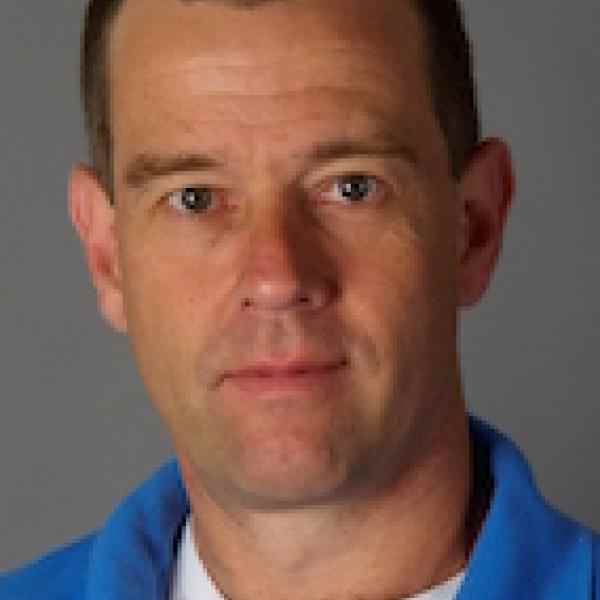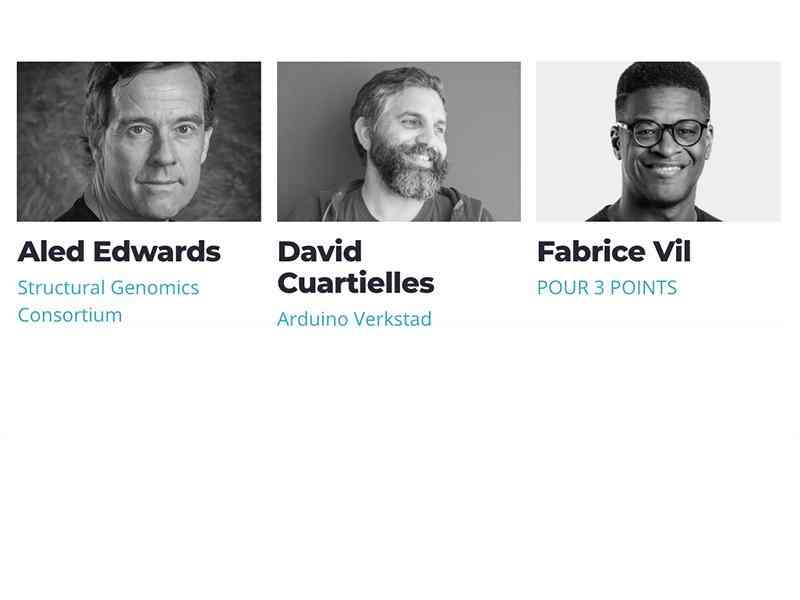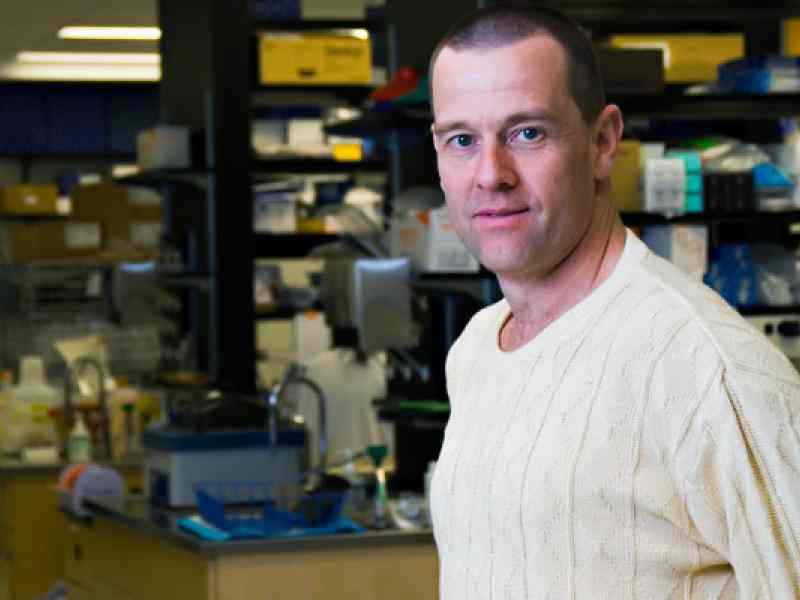Introduction
Aled Edwards is orchestrating a disruptive shift within the drug discovery process. Beginning with gene research through to human testing, Aled is breaking down the various levels of bureaucratic blockages, and triggering a multi-billion dollar industry to embrace new open source practices. As such, Aled is creating the conditions needed to one day make medicines affordable for all.
The New Idea
Transforming the way new drugs are discovered, Aled Edwards is re-imagining the public-private partnership model in order to produce an unprecedented system of open source research. Influencing all levels of the discovery chain, Aled is eliminating expensive redundancies and secretive practices through cross-sectoral collaboration. The result is a reversal of the current status quo in one of the world’s most expensive industries.
Aled is driven by the vision that the cures for many of the world’s most pressing illnesses are within this generation’s reach. He is realizing his vision by employing a social enterprise approach to drug research and development that promotes the sharing of formally proprietary information in a “no strings attached” manner. To support his approach, Aled has assembled and energized a global network of academics and researchers, backed by an alliance of top international pharmaceutical companies. Together, Aled’s network is unlocking pharmaceutical science faster, cheaper, and with more accessibility at the patient level.
Aled is also restructuring the historically complex financial models that are inhibitory to innovation, into a simpler funding strategy that leverages public, private, and academic resources. This is creating the conditions for more entrepreneurial practices within the drug discovery process, leading to more efficient distribution of resources through non-competitive strategic partnerships. Threading together the multiple layers of the drug discovery process in order to identify and rectify the blockages at every step, Aled’s work is through partnerships with multinational companies and universities from Canada to the United Kingdom, who have already changed how they find new drugs, Aled’s work has already transcended continental scale.
The Problem
In 2013, Forbes estimated that the cost a pharmaceutical company could expect to pay in order to see a single experimental drug move from research to market was upwards of $350 million dollars. This staggering amount is coupled with the fact that 95% of all experimental medicines are found to be ineffective and / or unsafe for human use. This means that in 95% of cases, pharmaceutical companies will not recoup their financial investment.
Yet, financial investments from pharmaceutical companies are only a one aspect of the mult-layered drug discovery process. Research and discovery firms as well as scientists and professors are integral to the discovery process. Much of the process starts with identification of a gene or protein within the human body that can be acted on or inhibited in order to treat an illness. These genes and proteins are often identified and investigated by scientists, researchers and professors housed at academic institutions, who themselves invest great financial, intellectual, and human resources into the discovery process. For example, Princeton University reports managing more than 250 million research dollars annually, highlighting that the vast majority of sponsored research is a result of faculty initiated projects.
With such colossal costs at stake, divergences of priorities can inhibit innovation. On the academic side, faculty members within academic institutions are competing to secure research dollars as well as coveted tenure positions. They may therefore choose more low-risk career options or decide to focus their expertise on areas that are of more interest to the private industry funders. On the private sector side, funder bias in research is very present; 75% of US clinical trials are paid by the private sector, and private pharmaceutical companies are inherently motivated to focus on highly specific projects that promise to maximize profit in order to recoup large financial investments.
In both academia and the private sector, the high stakes lead to working in silos. Top companies compete to be the first to identify and patent a new drug, with no incentive to share findings, strategies, or data with their industry competitors. Academic institutions are also burdened by competition with many universities even modeling themselves after their private sector counterparts. As a result, bureaucratic processes end up playing a significant role in the discovery of a cure; months and in some cases years are added to the process to work out patenting rights and profit distributions of a cure that may never work. Patients test potential cures for one company that have already been proven by another company to not work. In the end, the intent of the discovery process becomes overshadowed by the way in which it is administered. The unfortunate side effect is that an entire sector becomes criticized for practices for which there are no other alternatives available.
The Strategy
While working as a top international researcher for the University of Toronto, Aled Edwards became frustrated with what he saw as increasingly restrictive processes in the drug discovery chain. Despite being an award winning scientist, Aled believed that his contribution to solving some of the world’s most devastating illnesses was not as effective as it could be, because of a growing culture of competitiveness and bureaucratic practices that delayed innovation. In response to this, Aled founded Structural Genomics Consortium (SGC) in 2004. Believing that these restrictive processes directed resources towards patenting procedures, legal agreements and contract negotiations, rather than towards disease prevention and innovative discoveries, Aled established SGC as an international hub of open source partnerships. Mobilizing his career contacts and academic partners, Aled sought to build efficient collaboration between key players in the drug discovery chain. Registered as a not for profit research entity, SGC determines the 3D structure of rarely studied human proteins and then releases findings freely into the scientific community.
In order to create a future where patients have affordable access to therapeutic medicines, Aled realized that addressing the root causes of expensive medicines was the key. However, release of never before researched 3D protein structures was just the beginning component of a much larger systemic shift. Aled set out to implement a model for systems change that challenged traditional market dynamics to realize financial and intellectual profit through open source collaboration at each stage of the drug discovery chain. Concentrating on the three major actors of the drug discovery chain – the academic community, the private sector, and the public sector – SGC identifies and mitigates risks for each player in the process, while encouraging more entrepreneurial practices driven by the social good.
Beginning with the academic community, Aled along with a peer group of top scientists built and connected an international consortium of researchers and academic institutions. This respected consortium has more than 250 collaborations with academic labs in 20 different countries around the world including Canada, Brazil, and India. Aled leverages academic influence through highly strategic partnerships with top international academic institutions like the University of Toronto, in Canada and University of Oxford in England, both of which house SGC offices. This consortium also includes more than 200 individual scientists who have formally signed up with SGC. As part of the consortium, all members have full, free, and equal access to scientific information discovered and released into the scientific community by SGC. SGC never patents any of its work and information is made available to the network in a quick timeframe. As a member of the consortium, scientists and institutions are free to incorporate any aspects of the information shared by SGC into their pre-existing research or into any new research ventures explored. In turn, consortium members contractually agree to publicly and promptly place all outputs of their work derived from SGC collaborations back into the public domain, without filing for patents or copyrights. Aled is specific in his choice that knowledge must be released publicly and promptly, realizing that by encouraging a behavior of rapid and open knowledge exchange among the community of researchers he works with, he is establishing the foundation for all scientists to see the benefits in doing the same. Aled believes that this unprecedented practice of rapid and open sharing not only decreases research overlap and redundancies, but also decreases the time it takes to discovery an actionable finding that leads to drug creation and testing.
Aled identified the distribution of funds within the sector as another layer of barriers to innovation within the drug discovery process. Realizing that once researchers placed their work on an international open source platform, they would still need to compete against the special interests of both private and governmental sector funding preferences, Aled set out to align research priorities and financial resources. His approach was aimed at mitigating funder bias and preventing siloes and segregated funds distribution. Aled used SGC as a financing platform to organize private and public sector collaboration on shared interests by providing an independent financial pooling option. Different from the engagement relationships established within the consortium, Aled instead uses a financial partner model to bring together the various members of the private and governmental sector, as a means of financially supporting the outputs of the consortium. With a buy in commitment per financial partner of a minimum of $8M, funders can tap into the consortium research by helping create the research priorities. Scientists within the consortium are not forced to study the information made available by SGC. Aled’s model ensures that no single financial partner has more influence on the SGC’s research priorities than any other. His model also enables the SGC financial partners-especially those within the private sector- to share research priorities and interests with their industry competitors. Ultimately, the priority areas help map out hot spots of interests and show opportunities for continued collaboration between financial partners. Additional benefits to financial partners include the ability to appoint representatives to SGC’s Science Committee as well as its Board of Directors. These appointments offer Aled the chance to develop and leverage peer relationships with top individual influencers of the private and governmental sector, employing a top down approach of changing industry mindsets towards a more collaborative and open community framework.
The $8 million investment is relatively minimal for each financial partner, compared to traditional costs associated with exploring new drugs. The effects of the funds are also amplified by the shared resources of industry competitors and the collective intellectual prowess of the consortium. Aled raised more than $5 million in financial capital from the pharmaceutical sector to support its research from 2004-2007. This grew to a staggering $74 million from 9 collaborating international pharmaceutical partners from 2011-2015., The Government of Ontario, the Government of Canada, the Wellcome Trust have also together contributed nearly $200 million to the SGC over the past decade.
The effect of Aled’s systems change approach is already catalyzing new research within the scientific community. Aled points to a particular protein as an indication, showing that between 1995 and 2009, the previously known protein was all but ignored by the research community, with little peer reviewed literature available internationally. However, since SGC and its colleagues in industry made their findings of the protein public in 2010, the amount of literature available had increased at an exponential rate. One of SGC’s founding financial partners, GlaxoSmithKline (GSK) jumped on the research and by April 2012 was carrying out its first human testing – a rapid turnaround for the industry. Aled sees this as promising evidence that the more than 1,400 chemical inhibitors shared freely by SGC in 2013 alone will continue to foster collaboration and faster innovation.
Looking to the future, Aled wants to foster collaboration even further along the drug discovery chain by encouraging pharmaceutical companies to collaborate in human testing trials and patent free drug production. In 2014, one of Aled’s partners, a top Japanese pharmaceutical firm, has agreed to open source all of its findings for an Alzheimer’s-based trial. Aled is also seeking agreements that will place the public sector currently- represented by government – in a more influential position in the drug discovery processes. SGC is already conducting public outreach to non-scientific communities, such as patient groups, and advocates across North America and parts of Europe. Aled believes that there is a niche formula for public influence that will further increase knowledge flow and public engagement, resulting in faster, affordable medicine for all.
The Person
Born in Wales, Aled moved to Canada at a young age and discovered a passion and aptitude for academic life. Aled Edwards quickly and easily moved up the ranks of the research community as a structural biologist, working at McGill University, Stanford University, McMaster University before settling in Toronto as a teaching and research professor at the University of Toronto. Considered one of the top researchers in his field, Aled saw that despite his recognition and accolades from the science community, he was no longer excited about his work. Demonstrating a huge empathy moment in his career, Aled found himself struggling with the international funding models that never personally affected him, but affected his peers, his field, and ultimately the people he was trying to help. Aled set out to address these barriers to innovation, eventually establishing Structural Genomic Consortium.

 Tile image
Tile image Tile image
Tile image